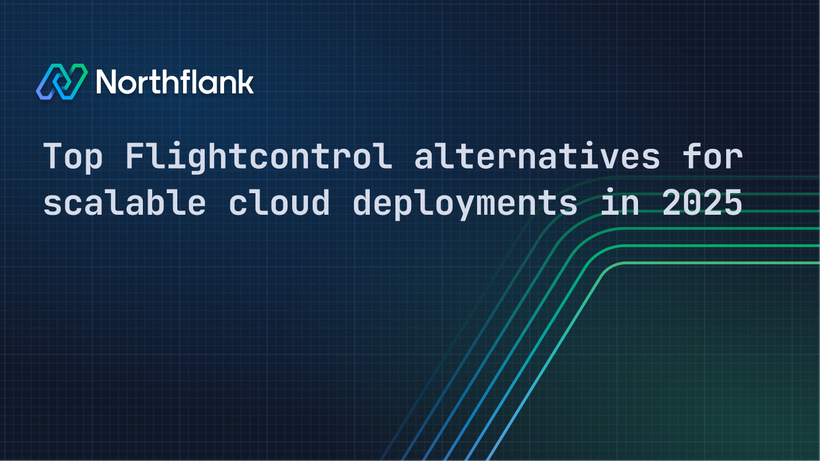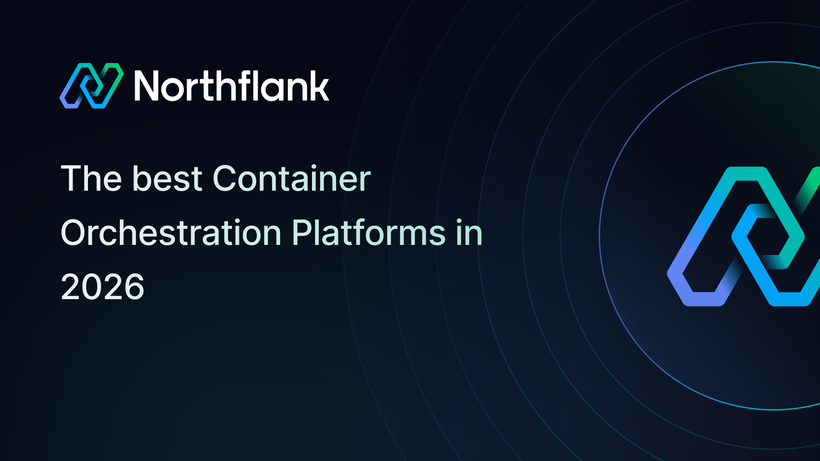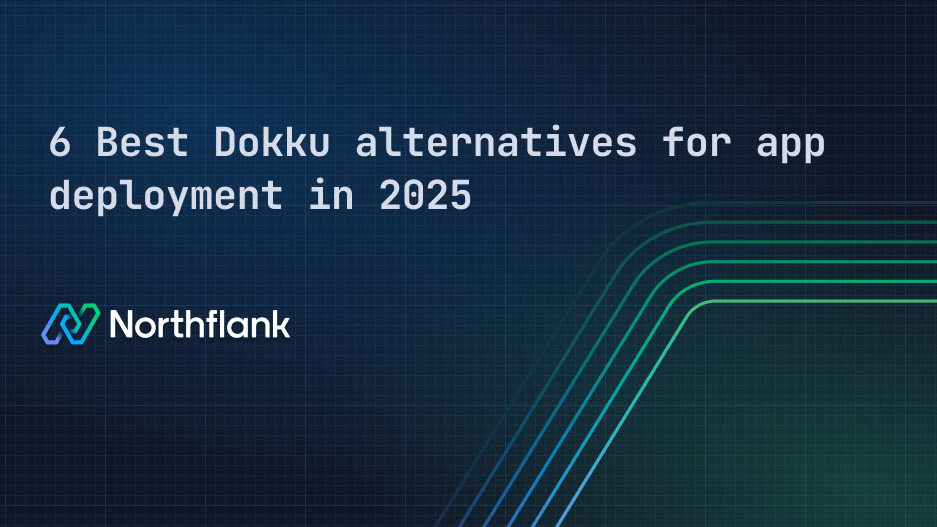

6 Best Dokku alternatives for app deployment in 2025
Dokku has earned a reputation as a lightweight way to deploy apps without relying on a fully managed platform. It’s open-source, easy to host yourself, and works well for solo developers or small teams who want control without too much overhead.
But as applications and teams mature, Dokku’s simplicity can start to feel limiting. Things like CI/CD, multi-service environments, autoscaling, and built-in observability require custom plugins or manual setup. Managing production infrastructure this way isn’t always sustainable, especially when uptime, security, and collaboration start to matter more.
More teams are moving toward platforms that keep developer control but offer stronger defaults, automation, and scalability, often at a lower total cost than maintaining a patchwork of tools. In this guide, we’ll break down what to look for in a Dokku alternative and how platforms like Northflank are helping teams ship faster with less operational stress.
If you’re short on time, here’s a quick look at the top alternatives to Dokku, and why teams are making the switch:
- Northflank – A flexible, production-ready platform with support for bring-your-own-cloud (AWS, GCP, Azure, and more), GPU workloads, LLM deployment, background jobs, databases, advanced CI/CD, preview environments, and multi-service environments. Ideal for growing teams that want full control.
- CapRover – Self-hosted PaaS built on Docker Swarm, good for small teams needing a lightweight, extensible platform.
- Coolify – Modern, self-hosted developer platform with UI-based workflows, service orchestration, and secrets management.
- Railway – Fully managed deployment platform focused on simplicity and speed for prototyping and small-to-medium apps.
- Fly.io – Edge-native platform designed for low-latency global deployments and background jobs, with built-in observability.
- Render – Managed platform offering support for web services, cron jobs, databases, and auto-scaling with a focus on developer productivity.
Dokku gives you the basics: git push to deploy, Docker under the hood, and the freedom to self-host. But when you're evaluating alternatives, the goal isn’t to replicate Dokku, it’s to move beyond its limitations. Here are the key areas to consider:
1. First-class CI/CD and environment workflows
Look for platforms that support automated builds, preview environments, and seamless promotion across dev, staging, and production. The less you have to script or bolt on, the more reliable your deployments will be.
2. Multi-service and background job support
Modern applications rarely consist of a single container. Whether you’re running APIs, workers, cron jobs, or queue consumers, your platform should handle this out of the box with a clear orchestration model.
3. Built-in scalability and resource controls
Horizontal scaling, CPU and memory tuning, and workload isolation should be simple to configure. You shouldn’t have to write custom scripts or SSH into a server to adjust capacity.
4. Monitoring, logging, and alerting
Logs and metrics are critical for debugging and performance. A good platform gives you visibility into service health, historical usage, and real-time logs without needing to wire up third-party dashboards manually.
5. Secrets, networking, and access control
Secrets management, private networking between services, and fine-grained access control (like RBAC) are no longer optional, even for small teams. These should be built-in, not DIY.
6. Cloud flexibility and portability
Some teams want a fully managed platform. Others want to host on their own cloud accounts or even across multiple clouds. A good alternative to Dokku should meet you where you are—without locking you in.
Once you know what you're looking for in an alternative, it becomes easier to filter out platforms that don’t align with your workflow. Here are six strong alternatives to Dokku, each solving different parts of the deployment puzzle.
Northflank is a platform that enables developers to build, deploy, and scale applications, services, databases, GPUs, LLMs, and jobs on any cloud through a self-service approach. For DevOps and platform teams, Northflank provides a powerful abstraction layer over Kubernetes, enabling templated, standardized production releases with intelligent defaults while maintaining necessary configurability.
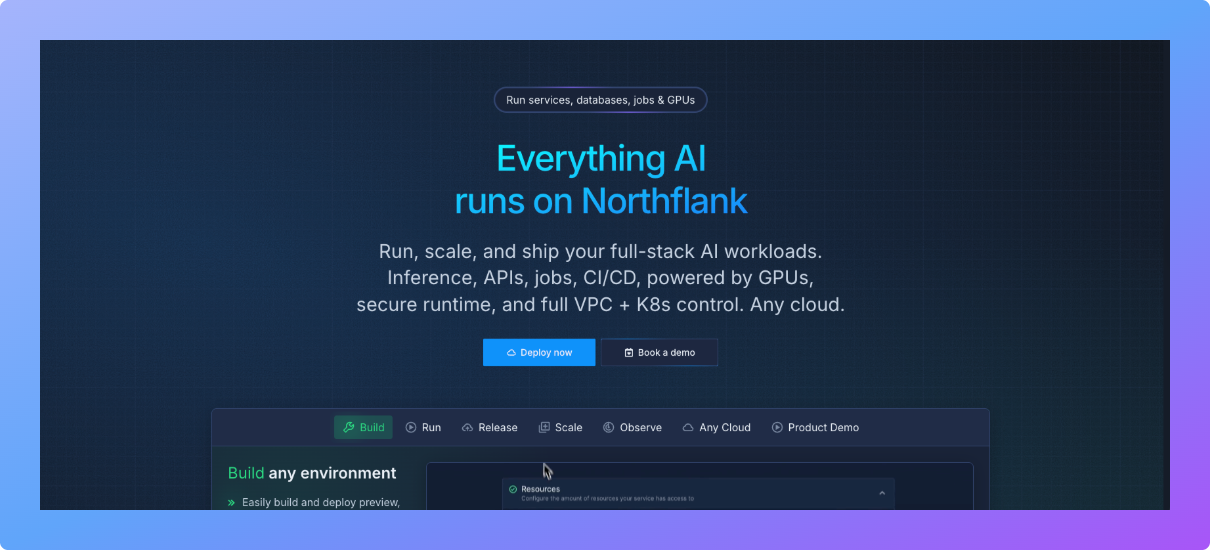
Key features:
- Kubernetes-powered, full-stack platform
- Deploy containers, databases, and scheduled jobs
- Private networking, and Bring your own cloud (AWS, GCP, Azure, etc.)
- CI/CD integration, real-time logs, with a developer-friendly and consistent experience across UI, CLI, API, and GitOps
- GPU support for AI workloads
- Automatic preview environments and seamless promotion to dev, staging, and production
- Automatic horizontal scaling
- Integrated secrets management
Why choose Northflank over Dokku?
- Built-in CI/CD and preview environments, no plugins needed
- First-class support for jobs, services, databases, and GPU/AI workloads
- Scalable Kubernetes-native deployments without managing infrastructure
- Built-in observability, RBAC, and audit trails
Potential drawbacks:
- Highly experienced DevOps teams might find it restrictive compared to directly managing raw Kubernetes clusters. It’s a fine balance between ease of use, flexibility, and customization; that line differs for every organization.
See how Weights company uses Northflank to scale to millions of users without a DevOps team
CapRover is a lightweight, self-hosted platform-as-a-service that uses Docker under the hood. It’s easy to set up on a single VPS and comes with a web-based dashboard and one-command deploys.

Key features:
- Deploy with Docker and Git
- Built-in Let's Encrypt SSL and NGINX-based routing
- App templating system for common stacks
- Persistent storage support and volume mounting
Why choose CapRover over Dokku?
- Easier initial setup with less manual config
- Built-in UI and one-click app deployments
- Ships with features like HTTPS and load balancing out of the box
Limitations:
- No built-in CI/CD or native Kubernetes support
- Not ideal for multi-node clusters or large-scale setups
Coolify offers a self-hosted PaaS with a polished interface and Git-based deployments. It focuses on ease of use while supporting a wide variety of deployment targets.

Key features:
- Git-based auto deploys
- Manage services, databases, jobs, and storage
- Built-in support for Docker and Kubernetes
- Real-time logs and UI-driven environment management
Why choose Coolify over Dokku?
- Clean UI with better real-time visibility
- Supports both Docker and Kubernetes targets
- Built-in database provisioning and service monitoring
Limitations:
- Still evolving and may lack enterprise readiness
- Kubernetes support is limited compared to dedicated platforms
Railway abstracts away much of the infrastructure and lets developers focus on code. It’s designed for teams that want zero-config deploys and a tight Git workflow.
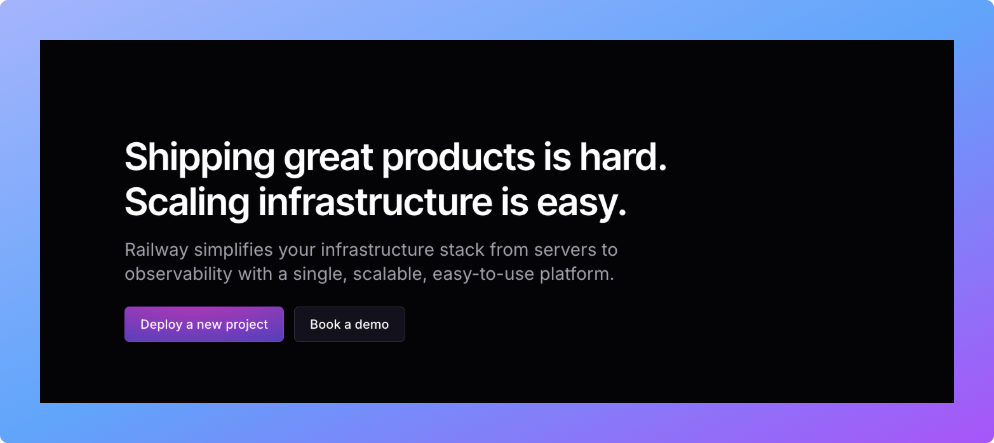
Key features:
- Git push to deploy
- Automatic environment provisioning
- Real-time logs, metrics, and secrets
- Minimal setup for databases and background workers
Why choose Railway over Dokku?
- Extremely fast to deploy from Git
- Simple database and environment management
- Developer-first UI and experience
Limitations:
- Less control over infrastructure
- Limited extensibility and scaling for complex workloads
Fly.io focuses on deploying applications close to users by running them in isolated micro-VMs across the globe. Ideal for latency-sensitive applications and edge-first architectures.

Key features:
- Multi-region global app deployment
- Postgres hosting with automated replication
- Built-in metrics and alerts
- CLI-first experience with optional web UI
Why choose Fly.io over Dokku?
- Low-latency app hosting across regions
- Better support for distributed applications
- Built-in Postgres and DNS support
Limitations:
- Can require app-level awareness of edge patterns
- Less suited for traditional monolith hosting
Render provides a developer-focused PaaS with built-in infrastructure primitives. It’s designed for teams that want automation without vendor lock-in.
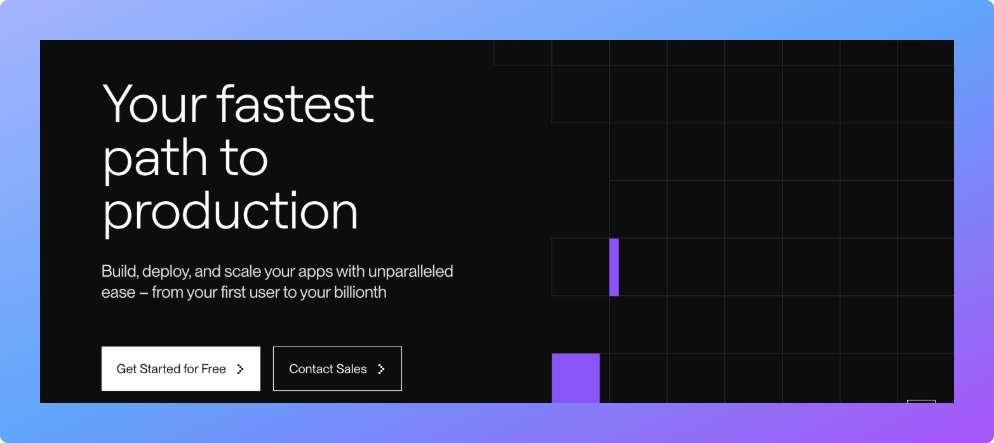
Key features:
- Auto-deploy from GitHub or GitLab
- Managed services for databases, cron jobs, and workers
- Built-in HTTPS, DDoS protection, and scaling
- Clear usage-based pricing
Why choose Render over Dokku?
- Easy autoscaling and managed infrastructure
- More enterprise-grade features out of the box
- Integrated GitOps workflows and PR previews
Limitations:
- Some workloads may need fine-tuning to match pricing model
- Not as customizable as fully self-hosted options
| Capability | Dokku | Northflank | CapRover | Coolify | Railway | Fly.io | Render |
|---|---|---|---|---|---|---|---|
| Server management | Single VPS | Kubernetes‑based | Swarm cluster | VM or Kubernetes | Fully managed | Fully managed | Fully managed |
| Multi‑cloud / hybrid support | No | Yes | No | Partial | No | Partial | No |
| Built‑in CI/CD | No | Yes | No | Partial | Yes | Yes | Yes |
| GPU and AI‑ML support | No | Yes | No | No | No | Yes | No |
| Autoscaling | No | Yes | Manual | Manual | Yes | Yes | Yes |
| Preview environments | No | Yes | No | No | Yes | Yes | Yes |
| Observability and alerting | Logs only | Full stack APM | Basic metrics | Basic metrics | Basic metrics | Advanced metrics | Advanced metrics |
| Role‑based access control | No | Yes | No | No | Yes | Yes | Yes |
Northflank appeals to teams that have outgrown self-hosted platforms like Dokku but don’t want to jump directly into the operational burden of managing Kubernetes. It offers a middle ground: full control, strong abstractions, and developer-first ergonomics.
Key reasons teams choose Northflank:
-
Cloud-native without the complexity
Northflank sits on top of Kubernetes but removes the boilerplate. Developers can deploy services, jobs, and databases without writing Helm charts or managing ingress.
-
End-to-end deployment pipeline
From Git-based CI/CD to automatic preview environments, Northflank integrates the entire development workflow into a single, consistent platform.
-
Multi-cloud and portability by design
Teams can deploy to Northflank’s managed infrastructure or bring their own cloud provider (AWS, GCP, Azure), avoiding vendor lock-in and maintaining data residency.
-
Advanced use cases, covered
Whether running GPU-based workloads for ML inference, asynchronous workers for background jobs, or production-grade APIs with autoscaling and RBAC, Northflank handles it all in one system.
Dokku is still a useful tool for simple apps and teams that prefer to stay close to the infrastructure. But as application complexity increases and production demands grow, many teams find these limitations become bottlenecks to their progress.
Platforms like Northflank offer a more complete solution for 2025: Kubernetes-backed automation, Git-native workflows, advanced observability, and multi-service orchestration—all without the overhead of managing infrastructure manually.
For teams seeking reliability, scalability, and flexibility across cloud providers, Northflank is a natural step forward.
Ready to explore? Try Northflank or compare platforms head-to-head with your current stack.
